Hide and seek
Meet the Nigerians who make your genuine ‘Italian’ leather.
Words and photos: Temiloluwa Johnson in Kano
Dung and pigeon droppings ferment under the sun in the tanning pits of Kano. For decades, raw hides have been turned into leather here before being shipped to Europe’s prestigious fashion houses.
Nigeria is Africa’s biggest leather producer and Kano is the centre of this sector. The Nigerian export agency says 71% of Nigeria’s leather products are exported to Italy and Spain. In the United Nations Comtrade database, Italy reports importing hides, skins, or leather worth $210-million from Nigeria between 2020 and 2024. Spain reports nearly $156-million.
The shoes, bags, and belts assembled from this leather will bear labels like “Made in Italy” but give no credit to the Nigerian workers who did the dirty first steps.
Kano is a commercial city, woven through by sandy roads buzzing with two-wheelers and yellow tricycles. In the narrow lungus of Kurmi market –alleys too tight for cars – an unmistakably animal smell assaults the senses, wafting out from Majama Tannery, a 120-year-old leather-dyeing compound operating from the backyard of a mosque.
This is the place where the hides that end up in Europe are tannerised. To tannerise is to convert hides into leather by soaking, peeling, chemically treating, and, sometimes, dyeing them.
Inside the tannery Aliyu Garba, known to all as “Baba”, is working in the pits with his 15-year-old grandson. At 60 years old, he has spent a lifetime working with hides. “These ones are from ram,” Baba explains, motioning to the bundle his son dragged across the floor.
This business includes three generations of the Garba family, which isn’t unusual. “I have been working since childhood. My forefathers did this business. My grandchild also works here,” says Ahmed Lari, who sits on a goatskin mat near Baba’s workstation. His 24-year-old grandson, Adamu, is peeling the hair off the hide.
Honest work has never been dirtier
Bent over the same pits, repeating the same motions, generations of families in northern Nigeria have made leather, much of it exported to the global market.
The first step of the tanning process is called sanwa ko patoz. The workers soak hides in a mixture of ash, sodium chloride, pigeon droppings, and ram dung. This makes the hides softer and easier to peel, Baba explains.
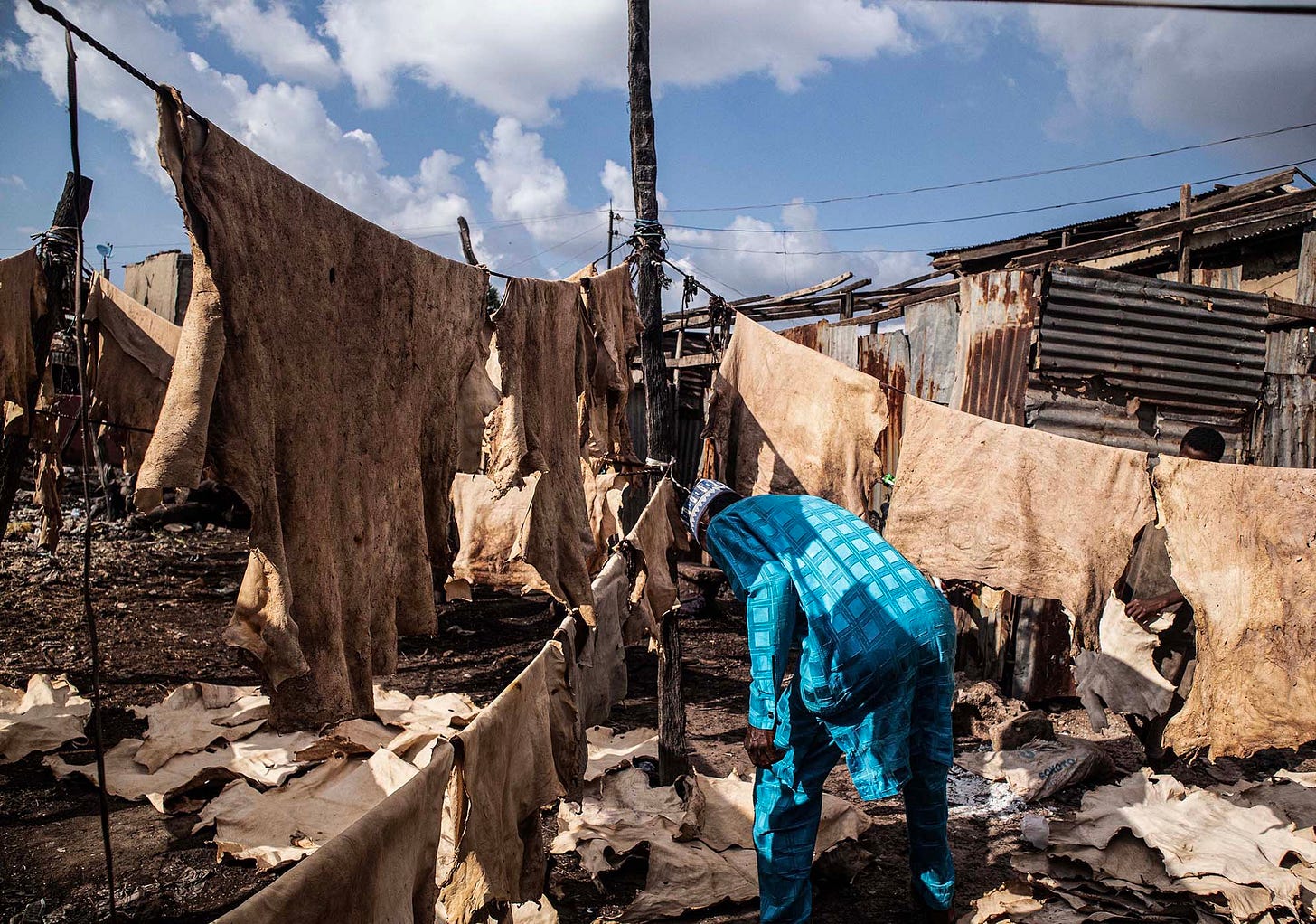
The mixture is also the source of the overpowering smell. When the hides are soft, they are peeled to remove the fur. The process is slow and methodical. Every hair must be removed.
If it proves impossible to remove all the fur in the first peel, the hide is soaked again in another pit with pigeon droppings. After peeling, the hide is good enough to use for drum skin. But certainly not for fashion. So it is soaked again, this time in a pit with baga ruwa, an enzymatic powder made from grinding tree seeds.
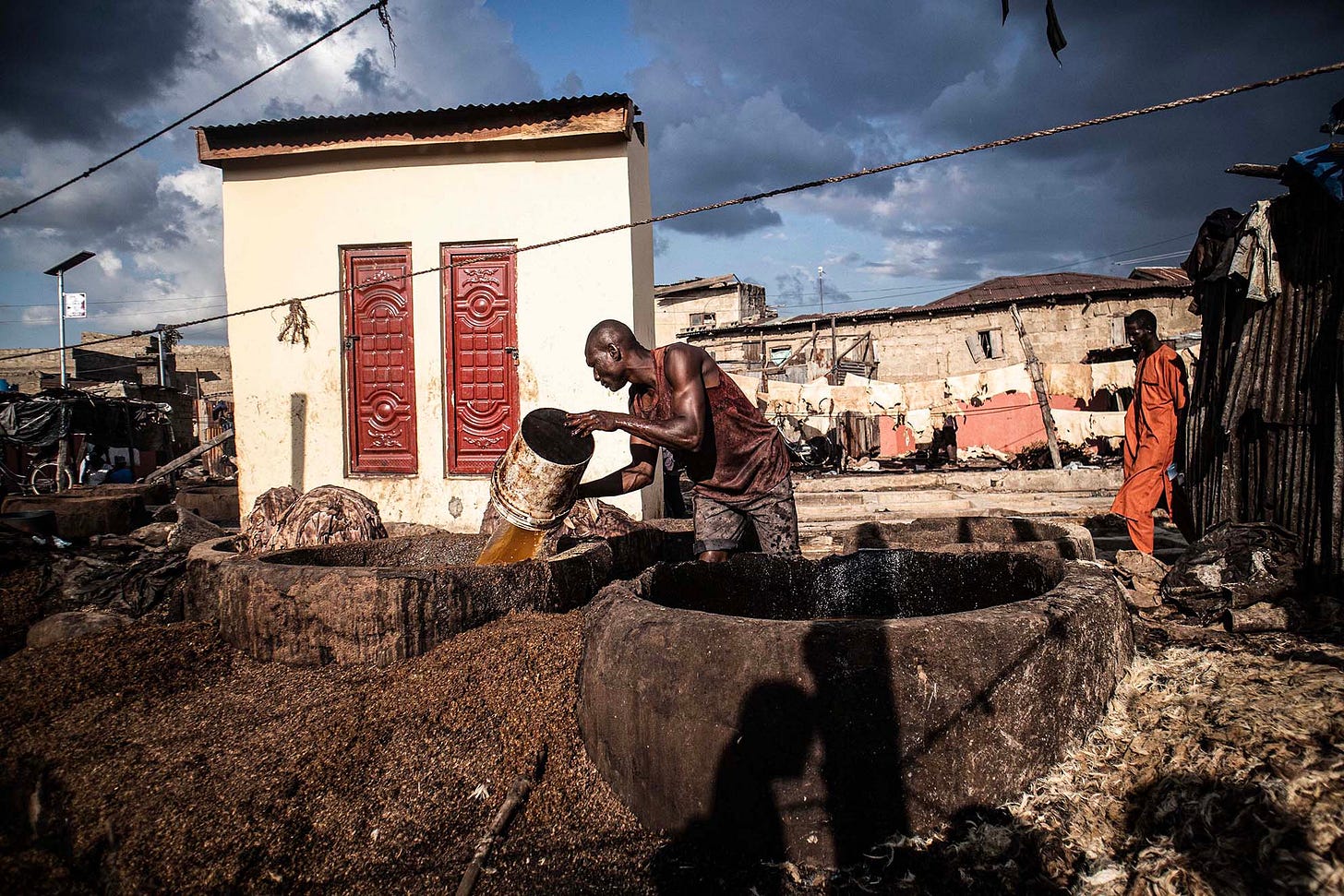
“That powder must be added,” says Baba. “Without it, the hide won’t take.” After this treatment, the hides can now be thinned and spread to dry.
Tanners once rubbed the drying hides with vegetable oil to shine. Now, they use spent engine oil, a cheaper alternative that leaves a dirty brown finish. The hides glisten under the Kano sun. Soon they will be cut and sewn into handbags, shoes, wallets, belts, and more. But not here.
Outside the tannery, Magaji Ahmed is dyeing leather, a craft he began learning at age 12. Behind him, strips of leather hang like curtains, drying into shades of red.
Export markets want their hides tannerised, but local people often use them raw, especially as outdoor seating. Water cannot penetrate hides with fur, Lari explains.
Every worker in Majama belongs to a workers’ union – the Kofar Wambai Tannery Custodians’ Association – but organising for collective action has yet to improve their welfare and earnings. Tanners sell cheaply to bulk buyers, brokers, and warehouses, making enough money only for subsistence. Baba says he makes no more than 500,000 naira a year (about $333).
The Nigeria leather industry is estimated to generate at least $600-million a year, but most of it goes to people in the middle.
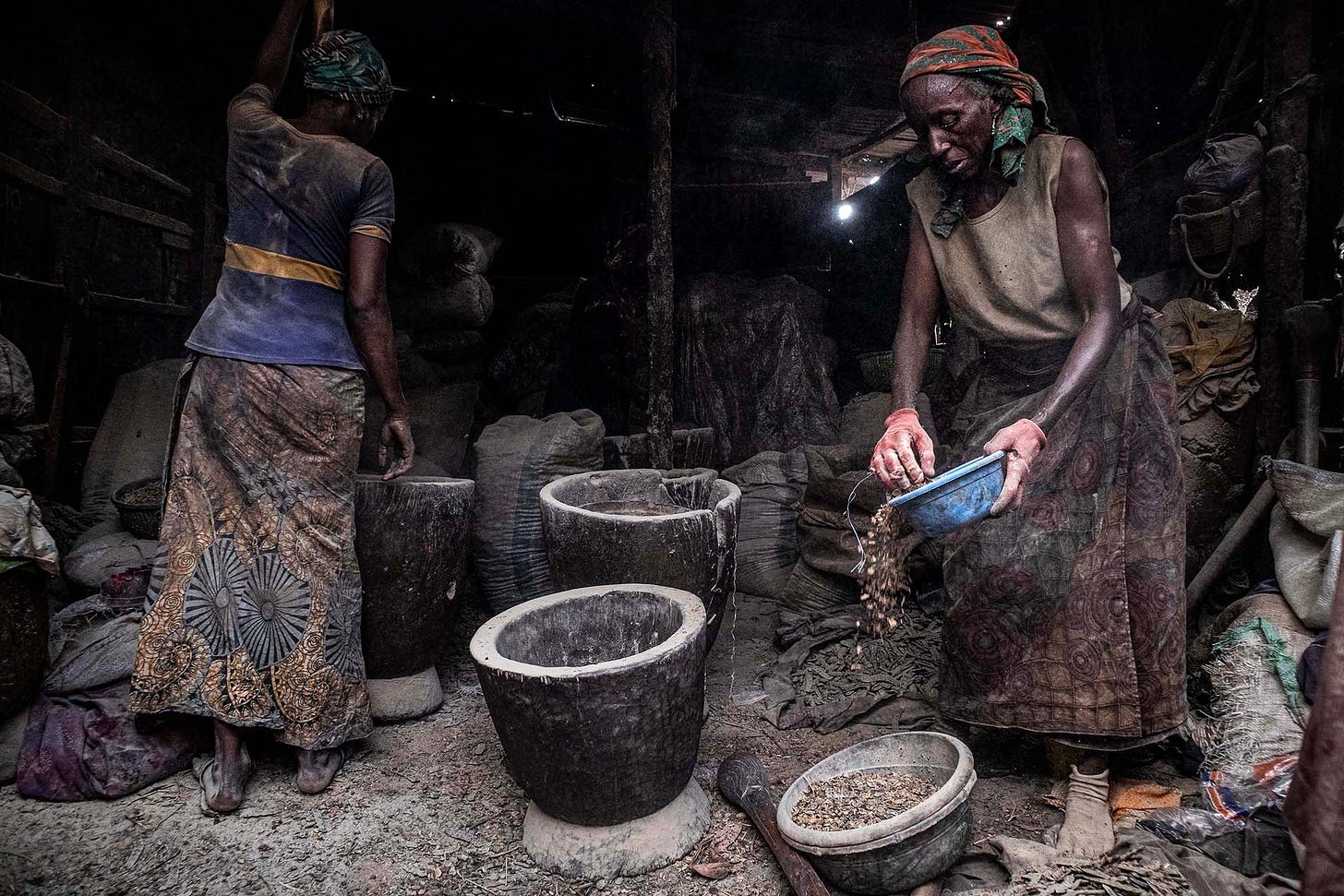
Still, that could change. Tanneries like Ztannery – less than 10km from Majama – are trying something new: partnerships with local designers. The tannery now operates as part of Lagos-based brand Winston Luxury Leather.
The entry of Winston Luxury certainly nods to Kano’s central place in leather fashion. But it remains to be seen if the brand will avoid replicating the old hierarchy: selling leather as a “luxury” while the men who soak hides in dung remain unseen and poorly paid.



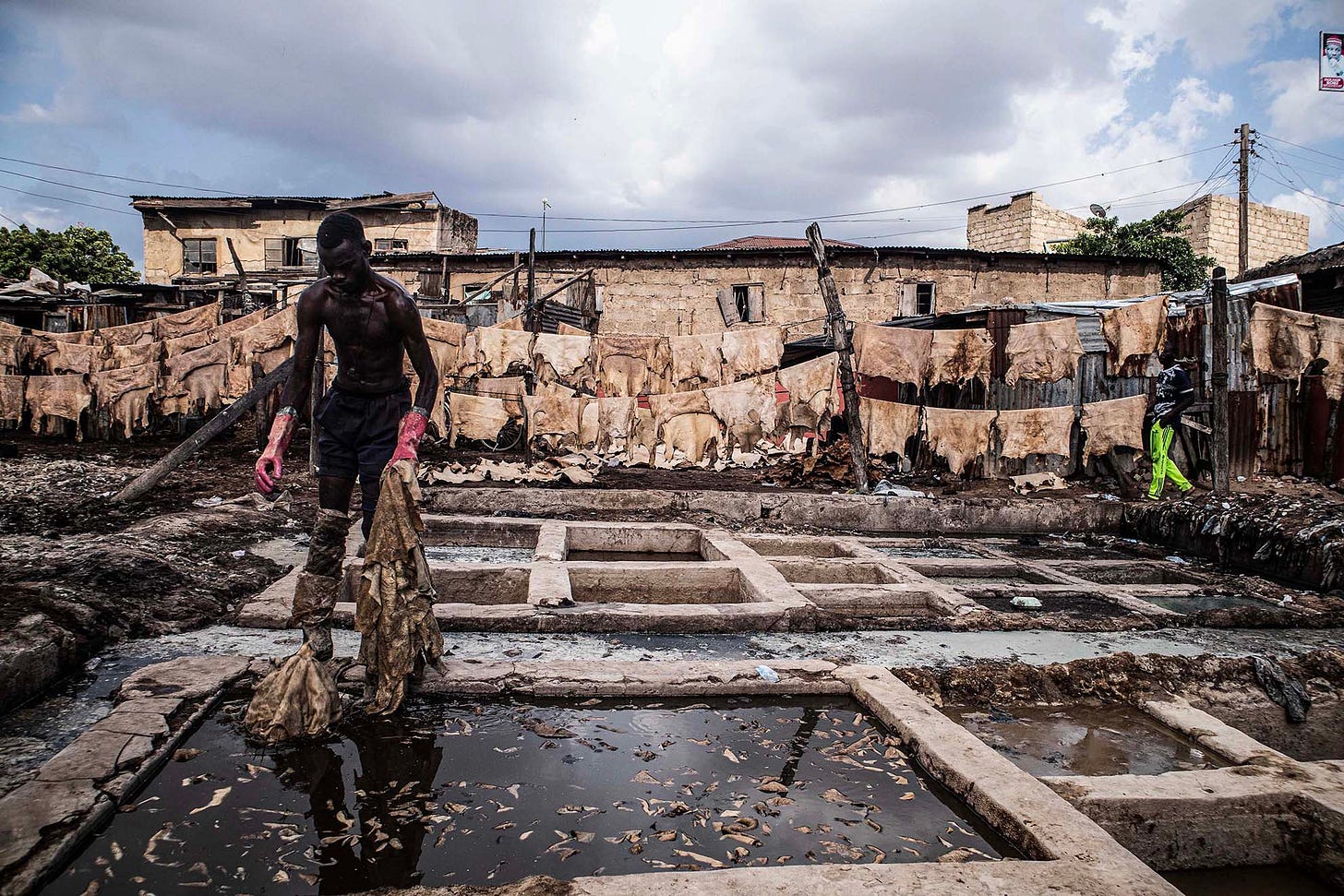
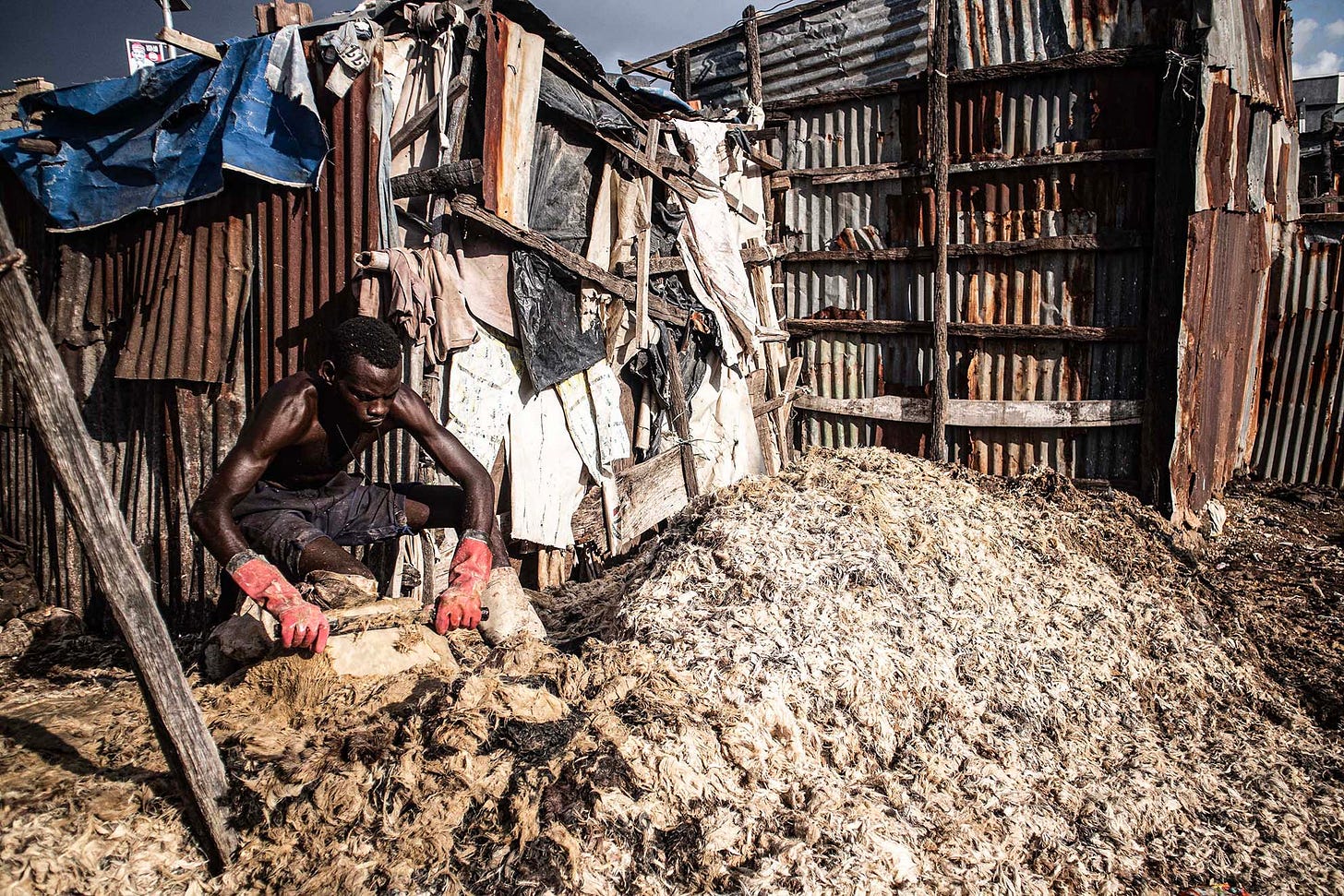
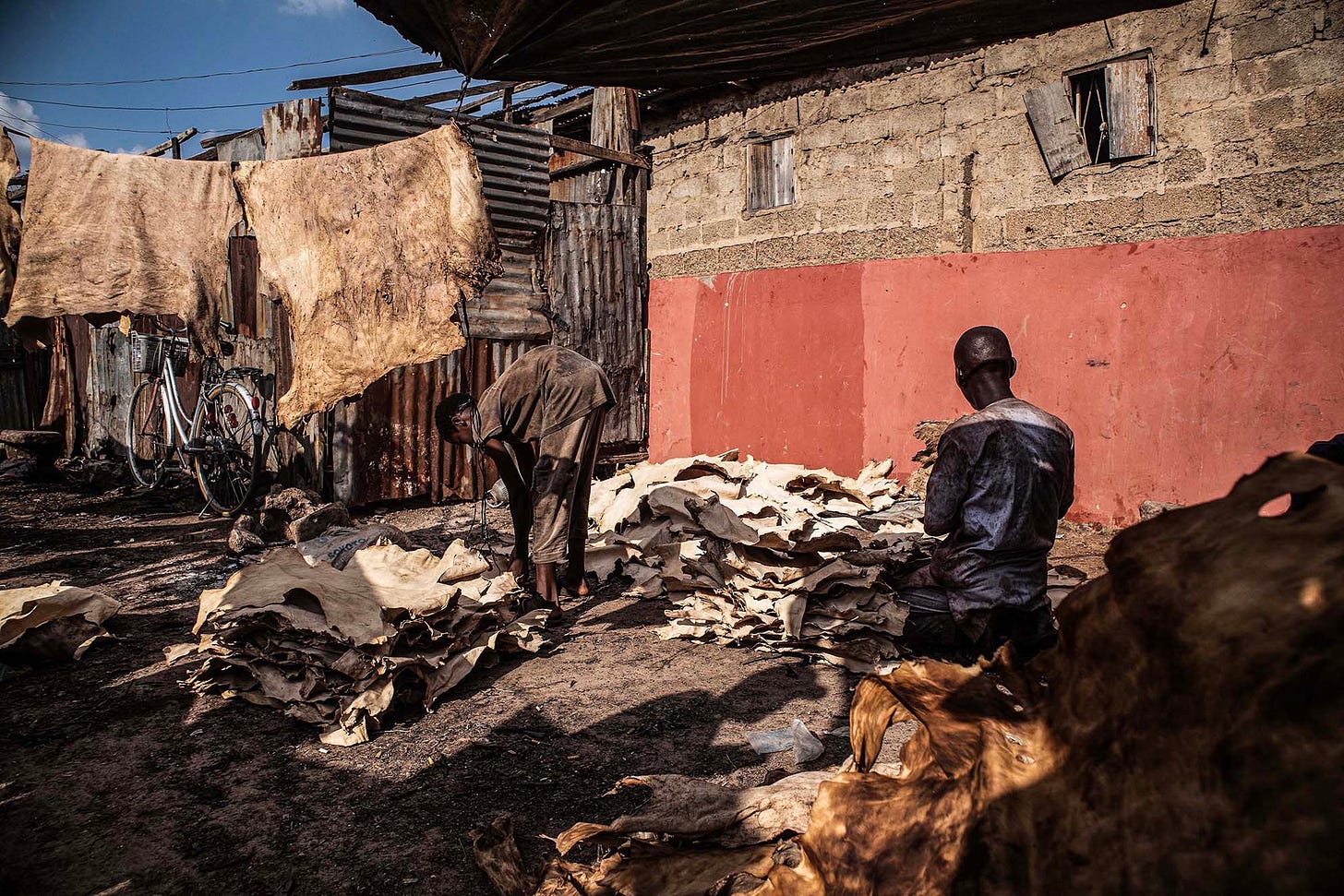
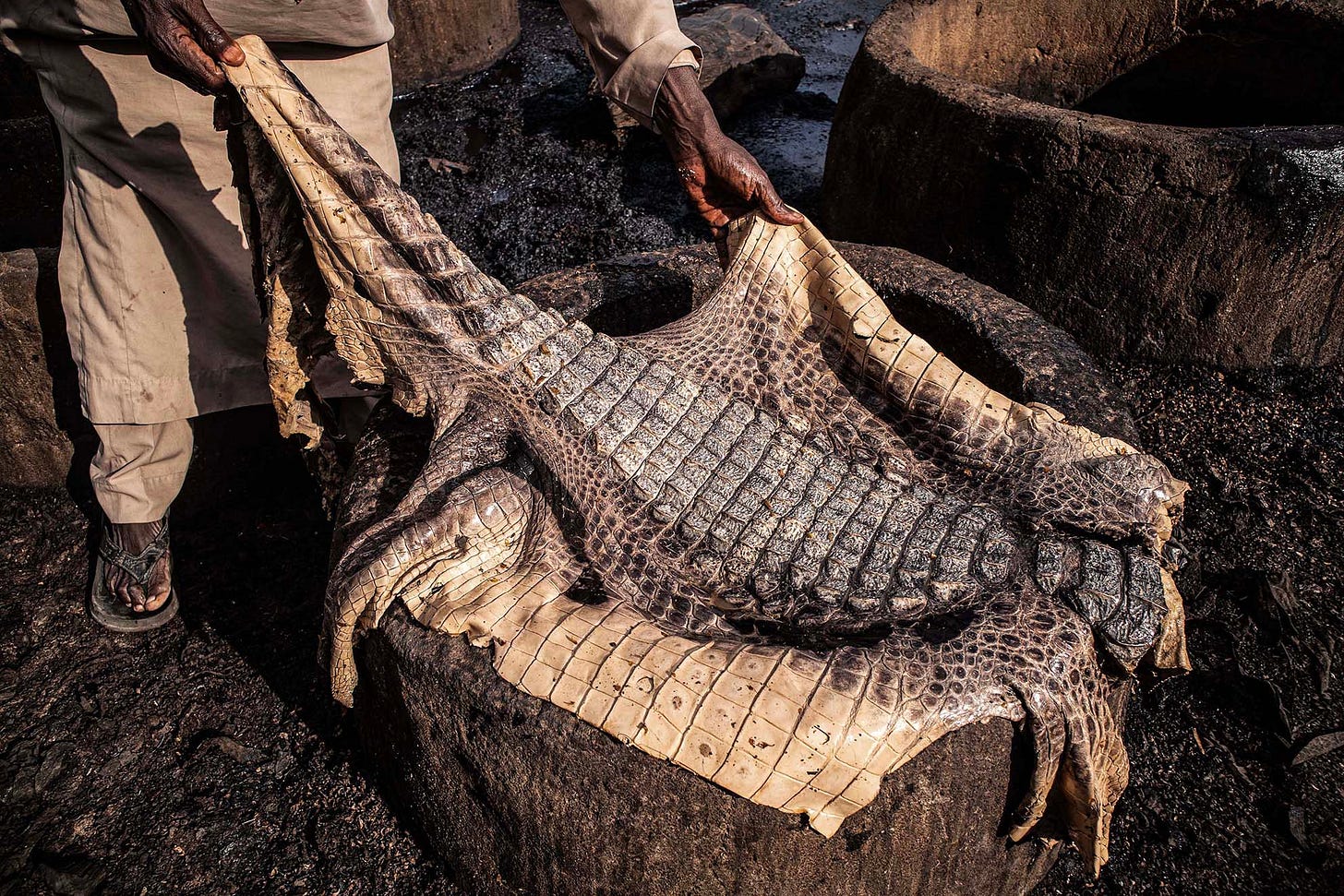
This is valuable insight, thank you, for more detail and I appreciate reading about named people and place in a story of the larger 'same old same old'. Where do the hides come from, prior to the tanners? Are these also from animal husbanders local to the tanners, or from further afield?